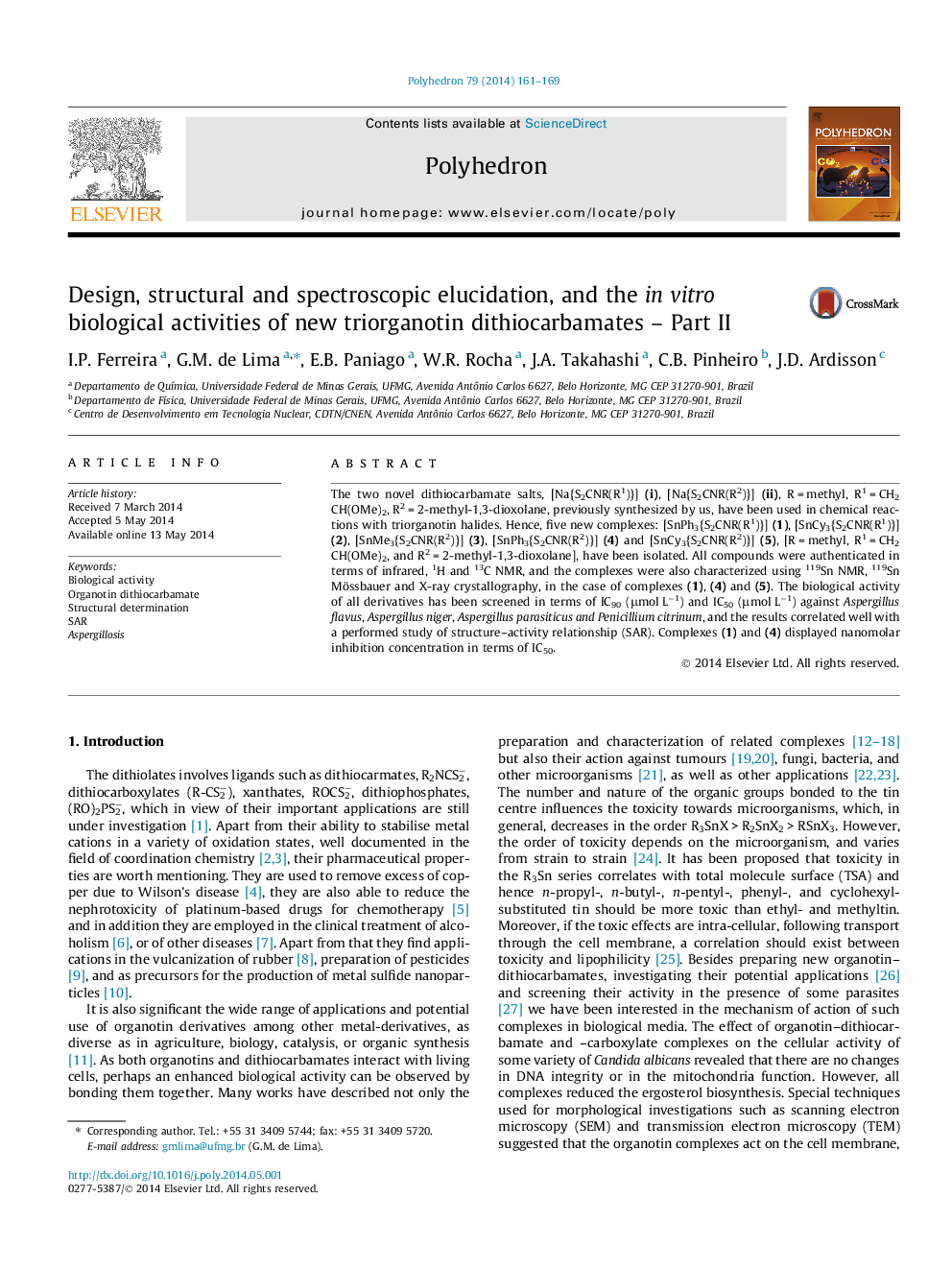| Article ID | Journal | Published Year | Pages | File Type |
|---|---|---|---|---|
| 1337712 | Polyhedron | 2014 | 9 Pages |
The two novel dithiocarbamate salts, [Na{S2CNR(R1)}] (i), [Na{S2CNR(R2)}] (ii), R = methyl, R1 = CH2CH(OMe)2, R2 = 2-methyl-1,3-dioxolane, previously synthesized by us, have been used in chemical reactions with triorganotin halides. Hence, five new complexes: [SnPh3{S2CNR(R1)}] (1), [SnCy3{S2CNR(R1)}] (2), [SnMe3{S2CNR(R2)}] (3), [SnPh3{S2CNR(R2)}] (4) and [SnCy3{S2CNR(R2)}] (5), [R = methyl, R1 = CH2CH(OMe)2, and R2 = 2-methyl-1,3-dioxolane], have been isolated. All compounds were authenticated in terms of infrared, 1H and 13C NMR, and the complexes were also characterized using 119Sn NMR, 119Sn Mössbauer and X-ray crystallography, in the case of complexes (1), (4) and (5). The biological activity of all derivatives has been screened in terms of IC90 (μmol L−1) and IC50 (μmol L−1) against Aspergillus flavus, Aspergillus niger, Aspergillus parasiticus and Penicillium citrinum, and the results correlated well with a performed study of structure–activity relationship (SAR). Complexes (1) and (4) displayed nanomolar inhibition concentration in terms of IC50.
Graphical abstractThe new complexes: [SnPh3{S2CNR(R1)}] (1), [SnCy3{S2CNR(R1)}] (2), [SnMe3{S2CNR(R2)}] (3), [SnPh3{S2CNR(R2)}] (4) and [SnCy3{S2CNR(R2)}] (5), [R = methyl, R1 = CH2CH(OMe)2, and R2 = 2-methyl-1,3-dioxolane], have been characterized by infrared, NMR, 119Sn Mössbauer and X-ray crystallography, in the case of complexes (1), (4) and (5). In addition their antifungal activities has been screened against Aspergillus flavus, Aspergillus niger, Aspergillus parasiticus and Penicillium citrinum. SAR (structure–activity relationship) studies have been used as support for the biological results.Figure optionsDownload full-size imageDownload as PowerPoint slide
